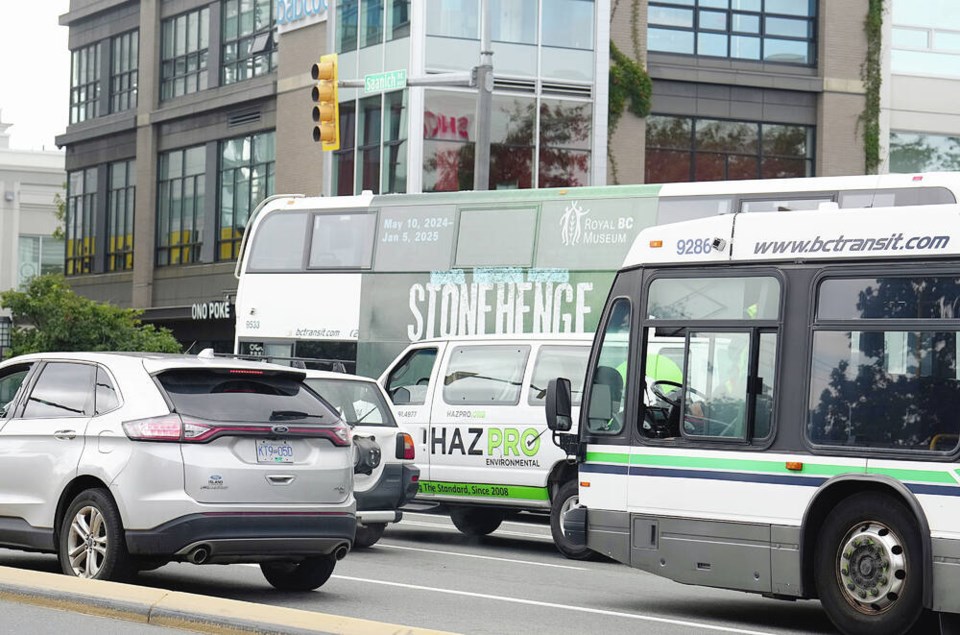The Capital Regional District has taken the first step toward establishing a regional transportation authority that will eventually make decisions about transportation service levels and investment in Greater Victoria.
On Wednesday, the CRD board voted to move forward with a regional transportation service that will combine the CRD’s existing transportation work on trails with growth planning.
It’s a first step, but it’s significant in terms of reducing carbon emissions, promoting active transportation and addressing congestion, said CRD chair Colin Plant.
“This was an important first step as a region to say we are formally going to work together.”
Plant stressed the new service will not take away any municipal autonomy to make decisions.
Once the service is up and operating — likely the second quarter of next year — it will be able to update the regional transportation plan and start to speak with one voice for the region on transportation matters.
“This is the first step in a process that allows us to work better together,” said transportation committee board chair and Saanich Mayor Dean Murdock. “Our best chance to address the challenges for transportation that we have as a region is for us to work together.”
Murdock said as individual municipalities, no one can seek big investments from senior governments.
“We’re not going to land the significant transportation infrastructure improvements that we need by working separately. It’s only by working together, by speaking with a common voice, representing close to half a million people, that we’re going to be able to attract the kinds of investment that this region needs in order to get people moving.”
The goal is to gradually increase regional authority, starting by bringing planning for the transportation network together with regional trails. The next level would give the CRD tools to raise and administer funds and attract more funding to the region, which would lead to establishing a new authority that would make decisions about service levels and investment.
Getting the regional transportation authority this far is a milestone for the CRD. The last time the board attempted to establish one was in 2018. That attempt fell apart when the West Shore pulled its support.
Opponents worried their priorities might be overshadowed by those of the core municipalities and that a new CRD service would only add bureaucracy and cost.
This time, the board was more open to the idea, though directors Gary Holman from Salt Spring Island and Al Wickheim of the Juan de Fuca electoral district voted against it.
Holman, who argued Salt Spring would get no benefit from the service but would have to bear some of the cost, was unsuccessful in amending the motion to remove Salt Spring from the service.
Langford councillor and CRD director Lillian Szpak said the West Shore has changed and can see the benefit of working regionally on issues like transportation.
“This is a good thing. And if we’re ever going to have commuter rail in the region, then we have to work collaboratively and speak with one voice to senior government and amongst one another,” she said.
“This is about priorities,” added director Barb Desjardins, mayor of Esquimalt. “We’ve heard this around the table, and we have been working on this for a long, long time.
“If there’s one thing that shows up across the board when people are talking about the region, it’s the transportation. It requires a more concerted effort and an effort where we’re all pulling in the same direction.”
The next step is for the board to get elector approval for the bylaw establishing the transportation authority. CRD staff have recommended doing an alternative approval process that would happen in the first quarter of next year.
The process allows the CRD board to adopt a bylaw if fewer than 10 per cent of electors submit a signed response form against it.
>>> To comment on this article, write a letter to the editor: [email protected]




